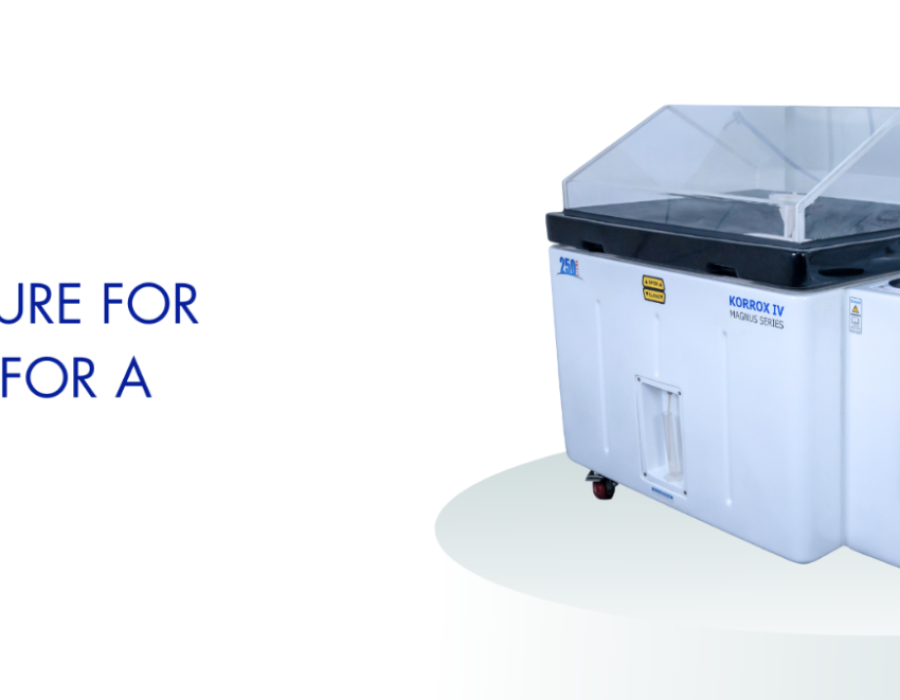In today's competitive industrial landscape, ensuring the durability and reliability of products is paramount. One critical aspect of product durability is corrosion resistance, particularly for materials and products exposed to harsh environmental conditions. The Salt Spray Chamber is an essential tool for testing and evaluating the corrosion resistance of materials. In this blog, we will delve into the importance of the Salt Spray Chamber, its applications, and how it plays a vital role in quality assurance and product development.
Understanding the Salt Spray Chamber
A Salt Spray Chamber, also known as a salt fog chamber, is a testing apparatus used to simulate corrosive environments. It exposes materials and products to a salt-laden mist, replicating the effects of prolonged exposure to marine and industrial atmospheres. This accelerated corrosion testing helps predict how materials will perform in real-world conditions, providing valuable insights into their durability and longevity.
Key Features of a Salt Spray Chamber:
- Corrosion Simulation: Replicates the effects of salt spray, a common cause of corrosion in metals.
- Controlled Environment: Maintains precise temperature and humidity levels for consistent testing conditions.
- Versatility: Suitable for a wide range of materials, including metals, coatings, and plastics.
- Compliance: Adheres to international standards such as ASTM B117, ensuring reliable and reproducible results.
Applications of the Salt Spray Chamber
The Salt Spray Chamber is used across various industries to assess the corrosion resistance of materials and products. Some of the primary applications include:
- Automotive Industry:
- Component Testing: Evaluating the corrosion resistance of automotive parts such as bolts, nuts, and body panels.
- Coating Evaluation: Testing the effectiveness of protective coatings applied to vehicle components.
- Aerospace Industry:
- Material Selection: Assessing the suitability of materials used in aircraft manufacturing.
- Surface Treatments: Evaluating the performance of surface treatments and coatings under corrosive conditions.
- Marine Industry:
- Marine Equipment: Testing the corrosion resistance of equipment and structures used in marine environments.
- Protective Coatings: Ensuring the effectiveness of coatings designed to protect against saltwater exposure.
- Construction Industry:
- Structural Components: Assessing the corrosion resistance of metals used in construction projects.
- Protective Treatments: Evaluating the performance of anti-corrosion treatments applied to building materials.
Benefits of Using a Salt Spray Chamber
Utilizing a Salt Spray Chamber offers several advantages for manufacturers and researchers:
- Accelerated Testing: The chamber provides accelerated corrosion testing, allowing for faster evaluation of material performance.
- Quality Assurance: Ensures that materials and products meet industry standards and regulatory requirements for corrosion resistance.
- Product Development: Aids in the development of new materials and coatings with enhanced corrosion resistance.
- Cost Savings: Helps identify potential corrosion issues early in the design process, reducing the risk of costly failures in the field.
How a Salt Spray Chamber Works
The Salt Spray Chamber operates by creating a controlled environment where a salt solution is atomized to form a fine mist. This mist is then sprayed onto the test specimens, simulating the corrosive effects of salt spray. The chamber maintains specific temperature and humidity levels to ensure consistent and accurate testing conditions.
Key Components of a Salt Spray Chamber:
- Atomizing Nozzle: Creates the fine mist of salt solution.
- Temperature Control: Maintains a constant temperature for consistent testing.
- Humidity Control: Regulates the humidity levels within the chamber.
- Specimen Racks: Hold the test specimens in place during testing.
Conclusion
The Salt Spray Chamber is an invaluable tool for evaluating the corrosion resistance of materials and products. Its ability to simulate harsh environmental conditions allows manufacturers to ensure the durability and reliability of their products, ultimately enhancing customer satisfaction and safety. By incorporating salt spray testing into their quality assurance processes, industries such as automotive, aerospace, marine, and construction can confidently develop and deliver products that stand the test of time.
In today's market, where product longevity and performance are critical, the Salt Spray Chamber plays a vital role in helping manufacturers meet and exceed industry standards. Its versatility, precision, and compliance with international testing standards make it an essential asset for any organization committed to producing high-quality, corrosion-resistant products.
By leveraging the capabilities of the Salt Spray Chamber, companies can gain valuable insights into material performance, drive innovation, and maintain a competitive edge in their respective industries.






Comments